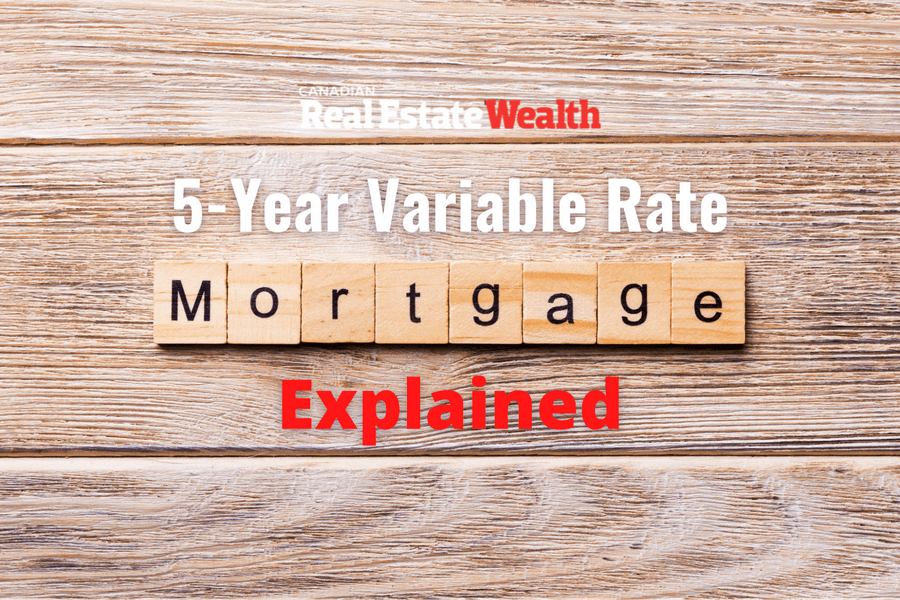We all know by now that the rate environment is shifting, and interest rates will continue to rise as the Bank of Canada (BOC) aims to control the higher-than-expected inflation. The BOC is looking to raise its overnight rate to 3%, which is currently at 1.5% after the last .50 point increase in June 2022. The bulk of these increases is likely to happen by the end of 2022 in .50 – .75 point increments, with the rest of the increases kicking in early 2023.
This means investors will likely see at least another 1% increase in variable rates by the end of 2022. If you are a real estate investor who is currently on a variable rate, or your mortgage is coming up for renewal, and you are contemplating whether or not to go with a fixed rate, here are the key factors that can help shape your decision:
1. Differential between fixed and variable rates:
Right now, the gap between a variable and a fixed rate is about 1.70% – 2.14% for residential mortgages (1 – 4 units), meaning that if you were to choose between a variable and a fixed rate today, you would pay a high premium to lock-in. In the past, this premium used to be a lot smaller. As it stands, variable rates have a runway to rise to where fixed rates are currently.
If you lock into a 5-year fixed rate today, you risk locking in at the peak. If the Bank of Canada gets a handle on inflation and things start to slow down (potentially a 24 – 36-month window), the bank typically eases its rate position to help stimulate the economy. If this happens and you are locked into a 5-year fixed rate, you would have 2 – 3 years more left on the mortgage at a higher rate.
If you cannot sleep at night as rates continue to rise and you still want to benefit from the opportunity of softening rates once inflation is under control, then locking into a shorter-term fixed rate (e.g., 1 – 2 years) may be an option for you compared to locking into a 5-year fixed rate.
2. There are other options to hedge beyond locking into a fixed rate:
A variable rate gives you the flexibility to recycle equity as a real estate investor to continue to grow your portfolio, but how do you manage the rising payments?
a) Consider switching to a capped variable rate.
A few lenders on the street offer a capped variable rate option. Under that option, as the prime rate that impacts variable rate rises, your monthly mortgage payment stays the same, the percentage of payment that goes toward principal declines, and the percentage of payment that goes toward interest increases. This is a good option if none of the other alternatives discussed below work, and you are okay with your mortgage’s life getting extended because you are not paying less principal as rates rise.
b) Extend the amortization of the mortgage or a loan.
If you have two loans of the same amount—one at a lower rate but shorter amortization and the other at a higher rate but longer amortization—you will see that your payment on the first loan would be higher. Having said that, your interest savings would be bigger because you are paying off the loan over a shorter period at a lower rate.
Extending amortization is a way to lower your monthly payment on a loan as the rates rise. As increasing the amortization will extend the life of the mortgage, discuss with your mortgage advisor alternative methods using the prepayment options to pay down the loan over the original amortization time horizon.
c) Replace expensive debt with cheaper debt.
Although the rates are rising, the cost of secured debts such as mortgages and lines of credit remains relatively cheap within the bigger scheme of things. One option to create capacity within your budget is to replace expensive debt with cheaper debt.
Let’s say you have a car loan with a monthly payment of $1200, and there is $30,000 left on that loan. It may make sense to pay it off using your secured line of credit and reduce the monthly payment from $1200 to $92—which is the interest payment at prime (3.7%) on a $30,000 loan.
Now you have extensive capacity to handle a rise in payments somewhere else in your portfolio, and, overall, you are at neutral or better from a budget and a cash flow standpoint.
d) Convert a portion of a mortgage to an interest-only payment.
An interest-only payment on a loan is often lower than an interest and principal payment. If you want to ease up the impacts of rising rates on your cash flow and budget, paying an interest payment would be lighter on your pocket. Having said this, you must be conscious of how long you want to stick with interest-only payments and convert those back to principal and interest or pay more than the interest every month so you can still get ahead.
Advanceable mortgages on the street allow you to divide up a loan into interest-only (line of credit) and principal and interest loans at the time of application and then convert an interest-only loan at any point in time back to a mortgage.
e) Take a short and long mortgage.
You do not have to choose between fixed or variable. You can choose both! Advanceable mortgages allow you to slice and dice a mortgage into multiple components of varying terms and rates. For example, you can have three loan components, one as a variable, one as a fixed rate, and the third as an interest-only line of credit. Tools like this can help you hedge while offering flexibility and better options for managing your cash flow.
Conclusion
In my view, while the environment is shifting, the sky is not falling, and there is no reason to panic. We all got so spoiled with free money during the pandemic that rates are relatively low within the overall scheme of things. While the rates are rising, prices have softened in some markets, and the new environment offers better opportunities for investors to pick up properties and win offers.
As shared, there are many ways to plan and hedge.
Being proactive is your best tool to ride the wave. As the famous quote states, “Luck favours the prepared.”
We have developed an interest rate sensitivity calculator to help you assess the impact of increasing rates on your current property portfolio and cash flow and to help guide your decision as to whether you should stay put, lock-in, or consider one of the tools shared earlier. Download a copy HERE.
Every situation is unique, and there are pros and cons to each option. Book a complimentary planning session with one of our senior advisors if you wish to discuss hedging or cash flow management strategies specific to your situation. For questions, email us at info@streetwisemortgages.com.
Dalia Barsoum is the founder of Streetwise Wealth, a boutique real estate wealth advisory firm, and Streetwise Mortgages, a multi-award-winning brokerage specializing in income property financing. Streetwise Mortgages is known as Canada's #1 small markets broker (AKA rental markets) as ranked by Canadian Mortgage Professionals.
The team at Streetwise Mortgages has funded over 1 billion dollars of mortgage volume and over 2700 mortgage transactions ranging from residential, multi-family, mixed-use, and other construction projects.
Dalia is the best-selling author of Canadian Investor Financing: 7 Secrets to Getting All The Money You Want, a columnist for Canadian Real Estate Wealth magazine and has been recognized as a Global 100 mortgage professional, one of Canada’s top 10 brokers, and a woman of influence.
Through strategic real estate financing advice, sophisticated deal structuring solutions, and access to an understanding of all the money tools and capital structures investors use to grow (private money, traditional mortgages, alternative mortgages, GP/LP structures, corporate capital structures, and joint ventures), Dalia and her team have helped thousands of Canadians kick start their real estate investment journey and take their portfolios to the next level while managing risk.








